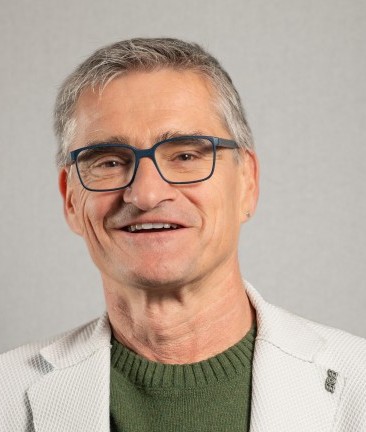
Economic advice, method- and data-based
We are a team of experts, researchers and practitioners with many years of economic experience in various industries. Our methods are data-based, incorporate the latest research findings and are field-tested. This enables us to create reliable analysis and solutions tailored to your requirements and the objectives of your company, public authority or association.
News
Barometer for renewable gases in Switzerland, edition 8, October 2025
In Switzerland significant demand for H₂ has yet to emerge. High electricity and operating costs challenge the economic viability of projects; existing electrolysis capacities remain unused.
The current draft of the gas supply act (GasVG) offers little encouragement: renewable gases play only a marginal role. Unlike for renewable electricity, grid feed-in charges remain possible – and an additional cost driver. There is also no possibility to introduce blending quotas. There remains little incentive to accelerate investment or stimulate demand in the future.
For the use of renewable gases – and new technologies – their price and the cost of their utilisation are decisive factors. Resilient planning therefore requires an economic approach: relative costs and price elasticities determine when and where additional demand may arise. These insights form the basis for aligning infrastructure, grid development plans and import capacities in a timely manner.
The Barometer is published by VSG in collaboration with E-Bridge Consulting and Polynomics. It can be subscribed to at https://gazenergie.ch/de/h2-barometer.
Polynomics sucht zur Verstärkung des Teams Data Analyst mit Fokus Ökonomie
Arbeiten Sie gerne mit Daten, haben sehr gute Kenntnisse in R und sind bereit, sich in neue, technische Aufgabenfelder einzuarbeiten, dann freuen wir uns auf Ihre Bewerbung.
The social costs of Duchenne muscular dystrophy in Austria
Duchenne muscular dystrophy (DMD) is a degenerative muscle disease that is inherited via the X-chromosome. The gradual degeneration of the muscles leads to complete paralysis of the extremities and thus to the loss of the ability to walk, to a high level of care dependency and finally to a premature death. There are no licensed therapies in Austria at present that can stop the degenerative progress of the disease.
What are the social costs of DMD in Austria? For the first time, we deter-mined the direct, indirect and intangible costs for each of the four stages of the disease. Wherever possible, we referred to Austrian information on prices and quantities and alternatively used information from international literature or expert estimates.
The social costs of DMD totalled EUR 30 million in 2023, which corre-sponds to EUR 131,000 per patient. Of this amount, 78% (EUR 23.5 mil-lion) were indirect costs arising from productivity losses among patients and their relatives (informal caregiving) and from premature death. The indirect costs were significantly higher than the direct costs in all four stages of the disease. The majority of the social costs (48%) were incurred during the last stages of the disease in which the patients have already lost their ability to walk.
At last, we estimated the lifetime costs of one patient with an average disease progression to be EUR 4.7 million, accompanied by a loss of ap-proximately 60 quality-adjusted life years (QALYs).
Services
Energy supply
Healthcare
Financial sector
Media and telecommunications
Competition economics
Regulatory economics and regulatory impact analysis
Economic policy analyses
Data analysis
Benchmarking / Efficiency analysis
Costing and pricing
Preference measurement / Discrete choice experiment
Publications
Barometer for renewable gases in Switzerland, edition 8, October 2025
In Switzerland significant demand for H₂ has yet to emerge. High electricity and operating costs challenge the economic viability of projects; existing electrolysis capacities remain unused.The current draft of the gas supply act (GasVG) offers little encouragement: renewable gases play only a marginal role. Unlike for renewable electricity, grid feed-in charges remain possible – and an additional cost driver. There is also no possibility to introduce blending quotas. There remains little incentive to accelerate investment or stimulate demand in the future.For the use of renewable gases – and new technologies – their price and the cost of their utilisation are decisive factors. Resilient planning therefore requires an economic approach: relative costs and price elasticities determine when and where additional demand may arise. These insights form the basis for aligning infrastructure, grid development plans and import capacities in a timely manner.The Barometer is published by VSG in collaboration with E-Bridge Consulting and Polynomics. It can be subscribed to at https://gazenergie.ch/de/h2-barometer.
The social costs of Duchenne muscular dystrophy in Austria
Duchenne muscular dystrophy (DMD) is a degenerative muscle disease that is inherited via the X-chromosome. The gradual degeneration of the muscles leads to complete paralysis of the extremities and thus to the loss of the ability to walk, to a high level of care dependency and finally to a premature death. There are no licensed therapies in Austria at present that can stop the degenerative progress of the disease.What are the social costs of DMD in Austria? For the first time, we determined the direct, indirect and intangible costs for each of the four stages of the disease. Wherever possible, we referred to Austrian information on prices and quantities and alternatively used information from international literature or expert estimates. The social costs of DMD totalled EUR 30 million in 2023, which corresponds to EUR 131,000 per patient. Of this amount, 78% (EUR 23.5 million) were indirect costs arising from productivity losses among patients and their relatives (informal caregiving) and from premature death. The indirect costs were significantly higher than the direct costs in all four stages of the disease. The majority of the social costs (48%) were incurred during the last stages of the disease in which the patients have already lost their ability to walk.At last, we estimated the lifetime costs of one patient with an average disease progression to be EUR 4.7 million, accompanied by a loss of approximately 60 quality-adjusted life years (QALYs).
Costs of ETS participation for WIP
CO2 emissions from waste incineration plants (WIPs) in Switzerland are currently excluded from the emissions trading system (ETS 1); as an equivalent measure, WIPs should have certain carbon capture and storage (CCS) capacities in operation by 2030. If this target is not met, the MSWI plants will be subject to ETS 1. In the study, we investigated the costs and implications of placing WIPs under ETS 1.From 2031, WIPs in the ETS 1 could incur additional costs of CHF 28 to 103 per tonne of waste - and as much as CHF 78 to 168 by 2040. There are also additional implementation costs of around CHF 1 per tonne of waste. However, the steering effect of this price signal remains limited. On the one hand, because it is not possible to pass on the costs of heterogeneous waste according to the polluter-pays principle and high prices lead to avoidance strategies. On the other hand, the buyer of goods often does not have the subsequent disposal and the associated costs in mind.

















